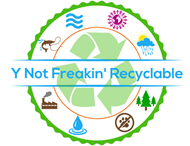2014
Several species like thresher sharks and ocean sunfish that preferred warm tropical waters were spotted almost 200 miles away near Alaska because of ‘the blob’.
2020
Australia’s 3.5 lakh km long Great Barrier Reef suffered a bleaching event when the Australian Bureau of Meteorology recorded its highest ever sea temperature.
2022
Prices of fish tripled in Mumbai, India due to a drop in fish catch volumes threatening the livelihoods of the famous Koli community.
What do you think is common between these three seemingly unrelated events in different parts of the world? The answer is Marine Heatwaves, which are happening due to ocean warming and other factors like high pressure systems. Marine heatwaves should not be misunderstood as waves traveling over the ocean.
These are extremely hot patches of water over the surface and subsurface of the ocean majorly attributed to human-induced global warming.
The first major MHW was recorded off the coast of Australia in 2011 which caused mass bleaching of reefs and a southward distribution shift in fishing communities. They’re detrimental to the marine ecosystem and specifically corals which lose color(expel algae) due to warming ocean waters. Corals occupy less than 1% of the global oceans but over 25% of fish depend on them for survival…often called the ‘rainforests of the ocean’.
In the Indian subcontinent, there are two regions where MHW occur specifically – western Indian ocean and North Bay of Bengal. When the temperature rises on the ocean surface, it can increase anywhere upto 3-4 or even 7 degree celsius.Not only do these heat waves cover a large area of the ocean basin, they can last anywhere from a few days to weeks or even months!
MHW are impacting the subcontinent by affecting monsoons and cyclones. If we take into account cyclone data since the 1980s, it shows that the characteristics of cyclones are changing over time. This is majorly related to ocean warming because a requisite factor for tropical cyclones to form is warm oceanic waters where the temperature is above 28 degree C. This is reflected most in the Indian Ocean which is the fastest warming ocean basin in the world. These warm waters provide more moisture and heat for the cyclones.
As a result, cyclone numbers are going up, which is more evident over the Arabian Sea. Since the Bay of Bengal is naturally warmer, already there are 2-4 cyclones forming there every year. But the Arabian Sea is reaching a similar status right now which supports active cyclogenesis.
Cyclones have increased by over 50% while their duration has increased by 80% like Cyclone Tauktae which started from Lakshwadeep Islands and hurled past Kerala, Karnataka, Goa, Maharashtra and made landfall over Gujarat. Although it should have died there because of friction with land, its remnants even reached New Delhi and Nepal where it caused rains. This increase in duration of cyclones is posing tremendous risks over the west coast.
The Indian Ocean is now a dangerous combination of events that will make the subcontinent increasingly vulnerable to climate change. Sea levels are rising every decade because ocean waters expand as they get warmer, which is also increasing the frequency of MHWs and subsequently cyclones. Cyclones are bringing more rains than before, which increases the flooding along the coast. This can also be accompanied by a high tide which is a natural event and storm surge which is caused by cyclonic winds. These compounded events affect human lives, infrastructure and food security.
But what should be done to better monitor these marine heatwaves? We need more surface based monitoring systems that can accurately tell us the warmer than usual spots. In the case of cyclone Amphan satellite data only showed that the sea temperature was 32 degree celsius. This discrepancy could have been overcome with an ensemble of instruments to support IndOOS like floats, drifter buoys and moored buoys which help monitor temperature, salinity and ocean currents. It takes at least 3 satellites to observe the Indian Ocean at all points in time, especially during a cyclone.
The 7500 km long Indian coastline spread across nine states and bordering an area of 2.02 sq.km area of Exclusive Economic Zone in the sea have a population of 420 million. Out of these about 330 million live on or within 150 km of the coast while the coastal economy sustains over 4 million fisherfolk and coastal communities.
As India’s blue economic policy concentrates on areas like deep sea mining and increasing contribution to the GDP, if ocean observational arrays are not enhanced, the opposite might happen and damage to the Indian Coast might be irretrievable. It is imperative for nations to step up so as to adapt to challenges put forth by a warming world.
*at pre-industrial Co2 levels
**according to the IPCC
source
 Pollution Climate Change Holocene Deforestation Population Acidification Y Not Freakin' Recyclable
Pollution Climate Change Holocene Deforestation Population Acidification Y Not Freakin' Recyclable



